Erika Robuck's Blog, page 31
March 14, 2011
Review: Those Who Save Us
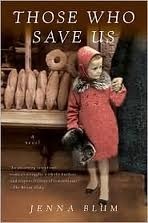
Jenna Blum's Those Who Save Us is 496 pages and was first published in 2005. I heard about it on Twitter because it is a current international bestseller and has just broken the mark of 100,000 sales, which in fiction is A LOT! I've had it for some time, but had to be in a strong emotional place before I read it because of the subject matter.
Those Who Save Us is a story told in two time periods about a mother, Anna, and her daughter, Trudy, who have a strained relationship because of a shared silence and shame about their past in Nazi Germany. The only physical evidence of that past is a photograph of Anna, four-year-old Trudy, and a Nazi officer, the Obersturmfuhrer of Buchenwald, but the emotional scars from their lives in Germany are still raw fifty years later.
Because Trudy was so young when she left Germany and because of her mother's silence about the past, her own subconscious shame sets her on a journey to find out about her legacy by interviewing citizens of Germany while the Nazi's were in power. It is in her search that she unearths more than she ever could have anticipated.
Part of what drew me to this novel was its perspective. In all of the books I've read about WWII, I've honestly never considered the non-Jewish German citizens' reaction to the Nazis beyond my harsh judgment of it. I found it jarring and eye opening to consider what it would have been like to be a German citizen, and to consider what I would have done in their shoes.
The emotional landscape of Those Who Save Us is one of the most powerful I've ever experienced. If being moved to tears is the mark of a good book, this is one of the best I've ever read. At times I wanted to look away and stop reading. Blum holds nothing back in her brutal descriptions of the savagery of the Nazis in every aspect of their lives–physical, emotional, sexual, and mental. In the end, however, I was glad I kept reading.
Those Who Save Us is one of the most moving books I've ever read and well worth your time. The writing is flawless, the perspective is unique, and its conclusion is satisfying and believable. I should re-emphasize the graphic nature of the book for those of you who are faint of heart, but if you are able to push through it, it's well worth it.
Jenna Blum is a true force in fiction, and I look forward to reading more of her work.








March 9, 2011
Big Announcement: I've Got an Agent!
In case you missed my excessive ALL CAPS and exclamation point laden Twitter and Facebook announcements, I'd like to officially report that I've got a literary agent. And not just any agent, but an agent I've watched for a long time whose passion for historical fiction might even exceed my own, and whose vision for my current novel and future novels is right in line with mine. Her name is Kevan Lyon of the Marsal Lyon Literary Agency in California, and I'm absolutely thrilled to be working with her.
Cheers!








March 5, 2011
Review: The Forgotten Garden
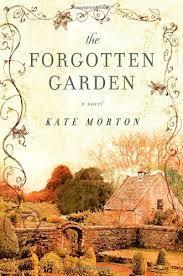
The Forgotten Garden by Kate Morton is 549 pages and was published in 2008 by Washington Square Press. I recently read Morton's The Distant Hours and enjoyed it so much I bought her other books. I was especially interested in this novel because it weaves time periods and plot lines, and I was not disappointed.
The book begins when a small girl is abandoned on a boat bound for Australia by a virtual stranger, known to the girl only as "the authoress." When she arrives in Brisbane, she is adopted by the dockmaster and his wife. Only a small suitcase of clothing and a book of fairy tales link her to the past she's left behind, and her memories fade as she grows happily in her new family.
On her twenty-first birthday, however, her father tells her about her past. It shakes her faith in her family and herself and she becomes consumed with searching for her lost identity. Her quest leads her to the Cornish coast of England to Blackhurst Manor, a small cottage on its grounds, and a hidden garden at the end of a maze. While she never fully finds all the answers she's looking for, her granddaughter picks up where she left off and finally solves the mystery that destroyed several families and their legacies.
The Forgotten Garden is a complex literary mystery spanning multiple generations. The chapters move back and forth in time and trace the journeys of the women in each place. Morton deftly handles transitions, and the shift in time is a natural suspense technique.
Morton's book is unique and her characters are memorable. Her overall tone and style remind me of A S Byatt, who is one of my favorite authors of all time. I highly recommend The Forgotten Garden.








March 1, 2011
Review: The Gentleman Poet
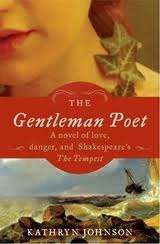
"The miracle of it was–we did not immediately drown."
Kathryn Johnson, The Gentleman Poet
Kathryn Johnson's The Gentleman Poet: A Novel of Love, Danger, and Shakespeare's The Tempest was published by Avon in September of 2010 and is 336 pages. It was recommended to me because, like my work in progress, it blends fact and fiction and features a real writer from history as a character.
Apparently, some historians and scholars believe Shakespeare's play, The Tempest, was based on the real shipwreck of the Sea Venture in Bermuda as it made its way to Jamestown. Because there were no records of Shakespeare in Stratford-upon-Avon or London at the time of the wreck, Kathryn Johnson wondered what if the playwrite did leave his native shores? Using true ship records, quotes from plays, and words from Shakespeare himself, Johnson creates a compelling story of the awakening of a young woman, Elizabeth Miranda Persons, in the dangerous, exotic, and new world of the Americas.
I loved this book. Johnson is a gifted storyteller, and I enjoyed her references to Shakespeare's plays. The rich historical detail, new world adventure, and romance in the book offer something satisfying to all kinds of readers.
It's such a pleasure to find a new voice in historical fiction worth following. I look forward to more from Kathryn Johnson.








February 25, 2011
Historical Fiction Writing Process
I'm a research junkie. I love digging around in history, searching for connections, lessons learned, and fascinating stories. It's pure treasure hunting for me. I imagine that's why I write historical fiction. It gives me a chance to mine for historical gold and find interesting and engaging ways to share it with others.
I was recently asked about my process for writing novels (from start to finish) so I thought I'd do a basic post on the process. Now seems like a good time to reflect on it, personally, because I've just finished my second novel, and I'm starting research on my third. Since I'm not yet ready to share my subject matter for the third, I'll use illustrations from the mapping of my second for this post.
I'm going to use the points of Freytag's pyramid to demonstrate my process since I also find it especially helpful in plotting.
Inciting Moment (Inspiration)
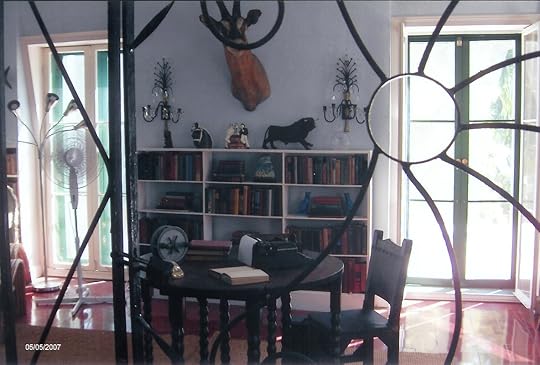
It was at the doorway to Ernest Hemingway's writing cottage at his Key West house that I knew my second novel would be set there. I was overwhelmed by the tour, felt his presence everywhere, and knew I wanted to bring others to the house–if not literally, than figuratively. When my obsession begins, I know I've found my subject and my muse.
Rising Action (Research)
Now, the delicious fun of research (READING) begins, and my husband starts sighing as the books start rolling into our house. (I like to scribble and note my books to death, so I try to buy as many books as possible.) I spend a lot of time surfing the web for pictures, videos, and articles about my subject. I join message boards and societies, and figure out how I can visit as many places significant to my book as possible.
Aside from my visit to Hemingway's home in Key West, I was able to get permission to research at the JFK Library and Museum, which holds 90% of the Hemingway archive. Hemingway's personal photos and letters I read during that time were pivotal in my understanding of the author and his family life.
Once I have the time period I want to use firmly in my mind, I make a timeline of actual events. I stay as true to history as possible and use societal and environmental problems as key moments and themes in my book. Then I find my angle into the story: my protagonist–the creation of my imagination to tell the historical tale, while experiencing his/her own struggles to emotionally engage the reader.
Climax (Drafting)
Once I have an excellent handle on my historical subject and my characters, I start writing. The first draft is a purge of imagination. Aside from a rough sketch of major events on the timeline and some plotting using Freytag's Pyramid, I generally don't know what's going to happen to my characters. I don't make a formal outline because much of the fun of writing for me is how my characters and story surprise me.
The Drafting and Research Phases often weave in and out of each other. From large to trivial details, I always need more information while I write. Also, research often inspires scene ideas, so I write entire scenes from different places in the story when I'm struck by certain details in my findings.
I work with a critique partner throughout the process submitting 20 pages every three weeks for review, followed by conferences on the phone or in person a week after submission. I'm also in a monthly online historical fiction critique group who I met at the Breakout Novel Intensive. We submit 8-10 pages to each other once a month.
I generally end up writing nine or ten complete drafts of my novel.
Falling Action (Edits/Revisions)
If there is a step of the process I least enjoy, this is it. It's no fun for me tear up sentences, rearrange scenes, and sometimes, delete and combine characters. The domino effects of revisions throughout the manuscript based on simple or complex changes always cause problems for me.
This is also the stage where I hire a professional editor and bring in the beta readers and book clubs, and while I love to share my story, it's actually quite terrifying to send the book out into the world specifically looking for critical feedback.
But it must be done.
Denouement (The Business of Writing)
This step is also horrifying because it involves switching function from sensitive-writer-in-the-cave mode to thick-skinned-objective-out-in-the-world mode. In this step, I craft the query letter and synopsis, develop a marketing strategy, and ultimately, try to find a publisher so readers can actually read the fruits of my labor. At the end of the day, I want to entertain, engage, and inspire readers, and keep them coming back to my future novels.
Writers, how is your process similar to or different from mine? Which steps of the process do you love or hate? I'd love to hear your thoughts.








February 22, 2011
Review: The Paris Wife
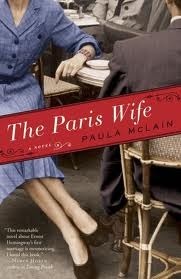
"Ahead in Paris, it was anyone's guess how we'd make it, but I couldn't worry about that. Ernest needed me to be strong for us both now, and I would be. I would scrimp and make do and not resent it at all because it was my choice in the end. I was choosing him, the writer, in Paris. We would never again live a conventional life."
Paula McLain, The Paris Wife
Today is the pub date for Paula McLain's novel, The Paris Wife, about Ernest Hemingway and his first wife, Hadley. The book is 314 pages, and I received an Advanced Reader Copy of it for review from Ballantine. Aside from my keen interest in historical novels, I was especially interested in reading this because my own work in progress is about Hemingway and his second wife in Key West.
The Paris Wife chronicles the courtship, marriage, and divorce of Hemingway and Hadley Richardson. It begins in Chicago in 1920 at a series of house parties where twenty-eight year old Hadley is surprised to find herself admired by a dashing, fearless, young journalist from Oak Park. Though he's only twenty-one, he's seen enough of the world through the war to have some maturity.
After hundreds of letters are exchanged at their parting, including his proposal, Ernest and Hadley marry and set off on their adventures through Europe where the dollar goes far, the alcohol flows freely, and there's no end to the parade of characters whose influence on Hemingway's life and fiction is vast. The birth of their son, Ernest's constant struggle to support the family, and the eventual poison of the rich and powerful people to whom they become acquainted succeed in killing the marriage.
The Paris Wife is a tragedy, and Hadley is a likable and sympathetic heroine. McLain's portrayal of Hadley and Hemingway is wonderfully complex and layered, and deeply reveals their characters. The novel doesn't vilify Hemingway, nor does it exult him; rather, it objectively lays out the death of their relationship.
McLain is a gifted writer, and Hemingway's stylistic influence is pervasive through her clean, spare prose. Like Hemingway, however, her themes and meanings are deeply felt and resound long after the words are read.
McLain establishes herself as a formidable historical novelist with The Paris Wife. I look forward to more from this gifted writer.








February 14, 2011
Review: The Little Stranger
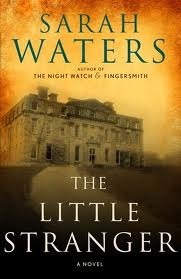
"I recall most vividly the house itself, which struck me as an absolute mansion. I remember its lovely ageing details: the worn red brick, the cockled window glass, the weathered sandstone edgings. They made it look blurred and slightly uncertain–like an ice, I thought, just beginning to melt in the sun."
The Little Stranger, Sarah Waters
The Little Stranger by Sarah Waters was published in 2009 and is 510 pages. My friend, Nicole, recommended it to me, and since I'm on a gothic kick in my reading, I bought it.
I could tell you that the story is a gripping page turner in the style of an extended piece by Edgar Allan Poe, ripe with post WWII history, crumbling mansions, the ramifications of class warfare, madness, decay, ruin, mystery, love, and a haunting, but all I really need to say is that I read it in three nights, stayed up way past my bedtime (in spite of the fact that the book gave me the creeps), and now want to read everything by Sarah Waters.
This is the best book I've read in a long time, and I urge you to read it immediately.








February 11, 2011
Book Giveaway
Today, I'm guest posting at Hallie Sawyer's blog, "Write for Me" on Hemingway's influence on my writing. There's also a chance to win a free, signed copy of my first novel, Receive Me Falling, if you leave a comment.
I hope to see you there!








February 3, 2011
You Belong to Me

"I've seen you, beauty, and you belong to me now, whoever you are waiting for and if I never see you again, I thought, You belong to me…"
A Moveable Feast , Ernest Hemingway
This theme of writers using others–those with a kind of power or rank using those without it–is prevalent in my work in progress, HEMINGWAY'S GIRL. It was inspired by Hemingway's relentless use of his friends, enemies, and acquaintances in his fiction. He didn't even always go to the trouble of disguising their names, and when confronted by them, passed it off as satire. "Can't you take a joke?"
I'm careful in my own fiction about using others. To say that I've never done so would be a lie. After all, what am I but the blend of words I've read, songs I've heard, a million conversations with thousands of people, an application of trend, time, civilization, geography, and religion. I'm the mathematical sum of all of my literal and figurative experience, so my fiction is naturally a product of it. It has to be.
But I'm not just a transmitter. I don't record in the same manner a camera takes pictures, moving or otherwise. I have choices. I can create the myth I want to create, manipulate the facts, produce the evidence I want to convince others of what I'm trying to say. There's power in that, but there's also responsibility.
If you're given a camera at a wedding, where do you point the lens? Do you take pictures of the best man groping a married woman, an underage cousin drunk and sick in the potted plants, the father of the bride arguing with the hotel manager over the bill? Or do you turn the lens to the newly wedded couple, forehead to forehead, while they dance to their song? The old woman seemingly watching her granddaughter, but seeing the ghost of her young self as a new bride? The nieces and nephews in undone buttons and untied ribbons, glorying in eating cake for dinner and the freedom of up-past-bedtime?
Writers, artists, musicians, everyone, the choice is yours. It's all there before you. The question is where do you put your focus and why do you put it there? We could debate the merits of optimism versus pessimism, but I think the bottom line is that the artist, the writer, the transmitter must render her subjects true-ly without diminishing or exploiting them.
What about you? Where do you point your lens? Do you prefer to tell the tales from the shadows or the dance floor? Do you represent specific people or kinds of people in your work?
(This blog post was inspired by Dani Shapiro's post On Being an Outsider.)
*Photo courtesy of Altingfest at Deviantart.com*








January 24, 2011
Writer's Digest Conference
Please visit Jane Friedman's blog, "There Are No Rules," for my guest post wrapping up my Writer's Digest Conference experience. I'd love to hear your feedback, whether or not you attended.













